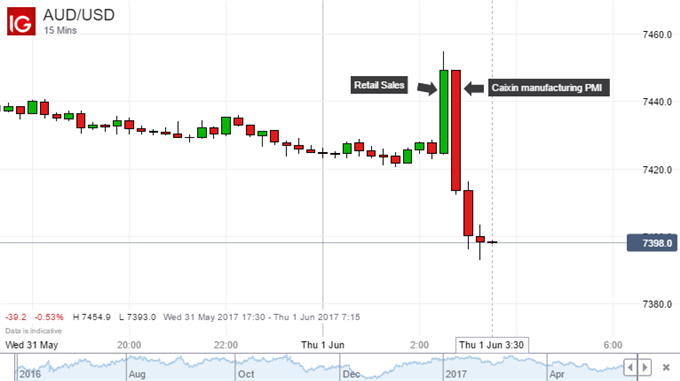Talking Points:
- Australian Dollar declined on a 49.6 Caixin manufacturing PMI reading
- The figure was the first contraction since June 2016, almost 1 year ago
- This disappointment followed yesterday’s improvement in official data
What do retail traders’ buy/sell decisions hint about the Australian Dollar trend? Find out here.
The Australian Dollar declined versus its major peers after the Caixin manufacturing PMI reading was released. A reading above 50 indicates growth while a measurement below 50 shows contraction.
The markets were expecting another improvement in China’s private manufacturing sector, just like what happened in yesterday’s official version. What they got was quite the opposite. The PMI survey clocked in at 49.6 versus 50.1 estimated, indicating a contraction. This was the first such print since June 2016, just about one year ago.
Since China is Australia’s largest trading partner, economic news-flow from the former country often implies knock-on effects on the latter, triggering a response from the currency.
Interestingly, the Caixin survey crossed the wires 15 minutes after a better than expected Australian retail sales data. That sent the Australian Dollar higher. Once the PMI disappointment flashed on traders’ screens, the Aussie erased this short-lived up move.




